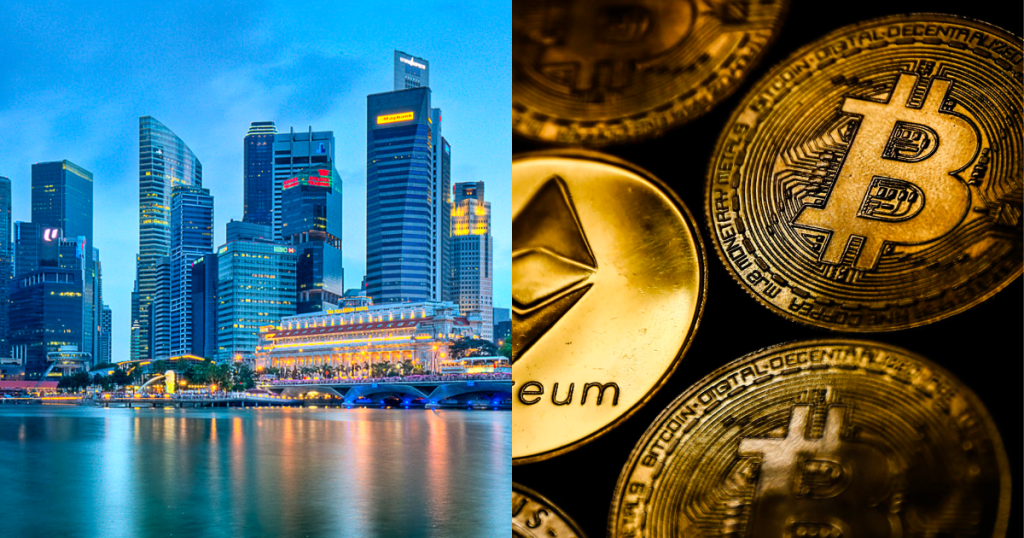Last November, the Monetary Authority of Singapore (MAS) conducted a pilot test exploring the use of tokenisation to trade government bonds.
Traditionally, such a trade would involve a number of intermediaries — adding to costs and settlement time. However, using tokenised bonds, the transactions were completed instantly with no third-party involvement.
Tokenisation is proving to be one of blockchain technology’s most promising use cases thus far. It allows real-world assets to be represented in digital form as ‘tokens’. These tokens can then be traded effortlessly, with all activity being recorded on a blockchain.
For example, the USDC stablecoin is a tokenised form of the US dollar. It can be transferred across borders instantly at almost negligible cost. USDC can also be exchanged for other tokenised currencies such as XSGD — StraitsX’s stablecoin pegged to the Singapore dollar.
MAS has been collaborating with institutions including JP Morgan and DBS Bank to uncover the potential of this technology. In the future, tokenisation could pave the way to more accessible and efficient financial markets.
Making value transfer easy
There are a number of ways through which tokenisation could simplify the trading process. For starters, it’d be easier to distinguish fake assets from real ones.
This has been a long-standing problem in the ticketing industry. Physical concert and sports tickets are easily imitated. Buyers don’t find out they’ve been scammed until they actually arrive at the event.
With tokenised tickets, transaction history would be readily visible. Buyers would be able to check if their ticket was issued by an official source and this would give rise to a more reliable resale market.
There would also be a guarantee of both parties meeting the terms of their exchange. On online marketplaces like Carousell, there’ve been cases where sellers have collected payment and failed to deliver the product in question.
Smart contracts — the agreements which facilitate blockchain activity — help address this problem. They can be seen in action across DeFi exchanges and NFT marketplaces.
Whether you’re converting between crypto tokens or buying NFTs, both sides of the transaction take place simultaneously. In this case, a buyer would receive their ticket as soon as they paid for it.
Web3: the point of difference
The example above highlights a key aspect which differentiates Web3 from its previous iterations. As Vinoy Kumar, former Global Head of Digital Assets at Standard Chartered, puts it, “This is the first time we’re seeing in technology that money and value can travel together.”
Up till now, you could buy a product or service online, but you’d have to transfer money via a bank or a digital wallet. With tokenisation — of both currency and assets — all of it happens together. Web3 facilitates the transfer of both money and information.
By doing so, it allows for the removal of intermediaries. In traditional finance, brokers are needed for a variety of services, including stock exchange trading and loan financing. In contrast, Web3 allows these services to be decentralised, wherein brokers can be replaced by smart contracts.
It allows instantaneous settlements, it takes away overheads. This is a very powerful construct.
– Vinoy Kumar, former Global Head of Digital Assets at Standard Chartered
For instance, crypto exchanges such as Uniswap rely on a system of smart contracts known as an Automated Market Maker (AMM). This allows crypto assets to be traded instantly at market price.
AMMs use publicly funded liquidity pools to execute such trades. Anyone can deposit crypto — say, an equal amount of Bitcoin and USDC — into a listed pool, in exchange for a share of the trading fees.
Stock brokers operate in a similar manner, except they provide all the liquidity themselves. This gives them significant power to influence market prices. They have access to a large volume of trading information, which can be misused for their own benefit.
AMMs are free from human input and give way to transparency and fairness in the financial markets.
Is Web3 making middlemen obsolete?
Middlemen are responsible for providing liquidity across a number of industries. Take watch dealers, for example — they readily purchase and resell luxury watches. This allows watch owners to cash out instantly, without the trouble of finding a buyer.
Naturally, dealers charge a commission in exchange for this convenience. As a result, sellers have to give up their watches for less than they’re worth.
With tokenisation, the need for this could go away. A seller could represent a S$10,000 watch as 100 tokens worth S$100 each.
A number of people could invest in the watch at a relatively low entry price. If the price of the watch appreciates in the future, the token prices would rise accordingly. Eventually, someone might buy up all the tokens and thus be entitled to physical ownership of the watch as well.
In this example, tokenisation presents a fairer deal for watch sellers and also opens up the market for a wider pool of investors. Watches benefit from the characteristics typically ascribed to money — their tokens can act as a medium of exchange, a store of value, and a unit of accounting.
As such, Kumar points out a unique feature offered by Web3: “Anything can serve as money.”
Through tokens, traditionally illiquid assets — such as real estate, fine art, and watches — can enjoy the same liquidity as currency. In theory, this solves a problem commonly addressed by middlemen.
However, brokers and dealers serve other functions too. They provide expertise in their field, whether it’s identifying a valuable piece of fine art or assessing the fair value of a property. This role isn’t as easily replaced. Investors will continue to rely on experts to make the right decisions for their portfolio.
Featured Image Credit: GoodMigrations / CNBC
Also Read: Vitalik Buterin warns Singapore about separating cryptocurrencies and blockchain – but why?
